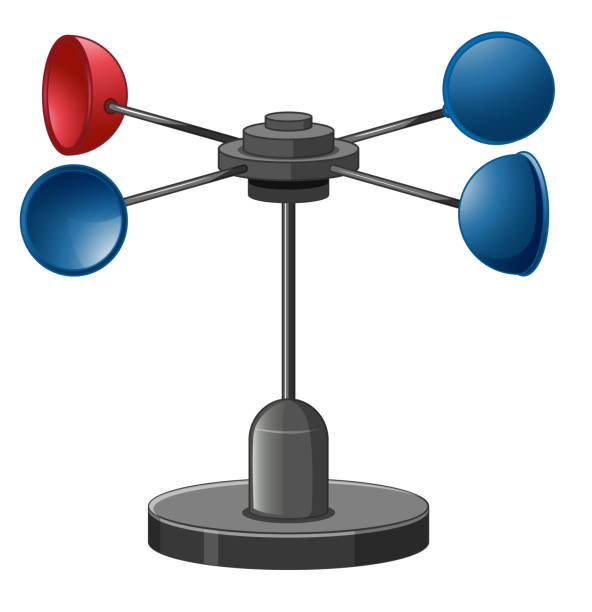Expert Tips for Adjusting Your Anemometer for Optimal Performance
Expert Tips for Adjusting Your Anemometer for Optimal Performance
Blog Article
Checking Out the Features and Advantages of Anemometers for Weather Condition Fanatics and Specialists
From cup anemometers to sonic anemometers, each kind brings its one-of-a-kind set of advantages and applications, dropping light on various facets of atmospheric problems. As we dig into the features and benefits of anemometers, a much deeper understanding emerges not just of prevailing weather sensations however also of the more comprehensive ramifications for markets like wind energy manufacturing and environmental study.
Value of Anemometers in Weather Tracking
Anemometers play a critical function in weather condition surveillance by providing accurate measurements of wind rate, aiding in forecasting and understanding weather condition patterns. These tools, varying from traditional cup anemometers to modern ultrasonic anemometers, are important for meteorologists, scientists, and climate fanatics alike.

Kinds Of Anemometers and Their Applications
The most typical types of anemometers consist of cup anemometers, vane anemometers, hot-wire anemometers, and ultrasonic anemometers. Cup anemometers are composed of 3 or four mugs placed on horizontal arms that rotate with the wind, gauging its speed. Vane anemometers, on the various other hand, make use of an easily rotating vane to line up with the wind direction, giving both wind speed and instructions measurements.
Each kind of anemometer has its special advantages and applications. Mug anemometers are robust and ideal for basic climate tracking, while vane anemometers are preferred for directional measurements. Hot-wire anemometers are delicate to reduced air velocities, making them perfect for indoor atmospheres. Ultrasonic anemometers are non-intrusive and offer high precision, frequently utilized in study and specialized weather condition surveillance applications. Recognizing the characteristics and applications of each kind of anemometer is important for picking the most proper tool for certain climate keeping an eye on demands.
Advantages of Utilizing Anemometers in Projecting
In weather forecasting, the utilization of anemometers offers important advantages for enhancing the accuracy of climate projecting. Anemometers determine wind speed and direction, offering essential data for predicting climate patterns. By including wind data into forecasting designs, meteorologists can better recognize the motion of weather condition systems, expect changes in weather, and concern more specific projections.
Additionally, anemometers play a crucial function in assessing possible weather condition risks. Monitoring wind speeds aids forecasters anticipate serious weather events such as hurricanes, hurricanes, and winter months storms with greater precision. This early warning system makes it possible for authorities to provide timely signals and carry out required safety and security procedures, decreasing the dangers to life and residential or commercial property.
In addition, anemometers help in maximizing renewable resource production. By assessing wind patterns, meteorologists can determine suitable areas for wind farms and anticipate power output, adding to the efficient generation of wind power.

Anemometers in Wind Power Manufacturing
Given the important duty anemometers play in offering precise wind information for climate forecasting and risk evaluation, their value includes the world of wind energy manufacturing. Anemometers are vital tools in the area of wind power, where the dimension of wind speed and direction is vital for identifying the expediency and effectiveness of wind generator installments. By accurately measuring wind speeds at varying elevations, anemometers help optimize the placement and style of wind turbines to make the most of energy result.
In wind farms, anemometers are strategically placed to collect the original source real-time wind data that is used to evaluate the potential power manufacturing of a website. This data is critical in establishing the financial stability of wind power jobs and in forecasting energy generation to make certain grid stability. In addition, anemometers help in checking wind problems to enhance generator efficiency, avoid damage from high winds, and ensure the safety and security of employees operating in the area of wind generators.
Enhancing Weather Understanding With Anemometers

Anemometers play a key duty in boosting our understanding of microclimates. These local climate problems can differ substantially from more comprehensive local projections, making it important to have precise data for particular areas. anemometer. By strategically placing anemometers in numerous areas, scientists can gather comprehensive info on how wind behaves in various surfaces, metropolitan atmospheres, or bodies of water
Furthermore, anemometers add to boosting weather condition forecasting models by providing real-time information on find more info wind habits. This information is particularly valuable for predicting severe climate occasions, optimizing farming methods, and supporting sectors like aeronautics and maritime navigation. Generally, anemometers are important instruments that allow us to dig deeper right into the complexities of climate systems, eventually leading to even more precise predictions and better-informed choices.
Verdict
To conclude, anemometers play an important role in climate tracking and projecting by determining wind rate and direction. They are essential devices made use of by weather condition fanatics and experts to collect accurate information for predicting weather condition patterns and assessing prospective effects. Anemometers also have applications in wind energy production, further highlighting their importance in both meteorology and renewable resource markets. Overall, anemometers contribute to boosting our understanding of weather phenomena and improving projecting capabilities. anemometer.
From cup anemometers to sonic anemometers, each kind brings its unique set of advantages and applications, dropping light on different you could try this out facets of climatic problems. These tools, varying from traditional cup anemometers to modern ultrasonic anemometers, are necessary for meteorologists, scientists, and climate fanatics alike. The most common types of anemometers consist of mug anemometers, vane anemometers, hot-wire anemometers, and ultrasonic anemometers. Mug anemometers are durable and ideal for basic climate tracking, while vane anemometers are preferred for directional dimensions. Anemometers are essential instruments in the field of wind energy, where the dimension of wind rate and instructions is critical for establishing the usefulness and performance of wind generator installments.
Report this page